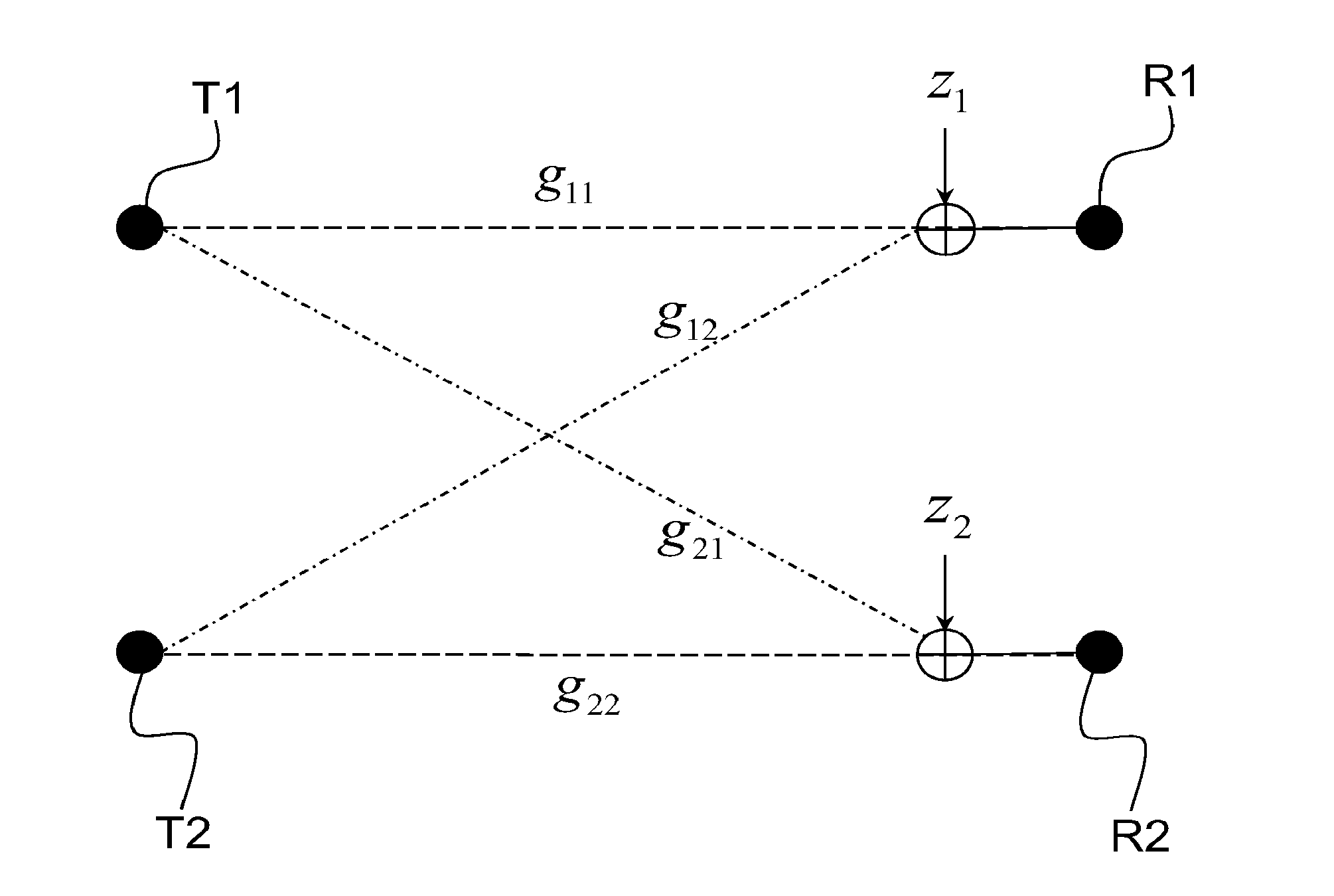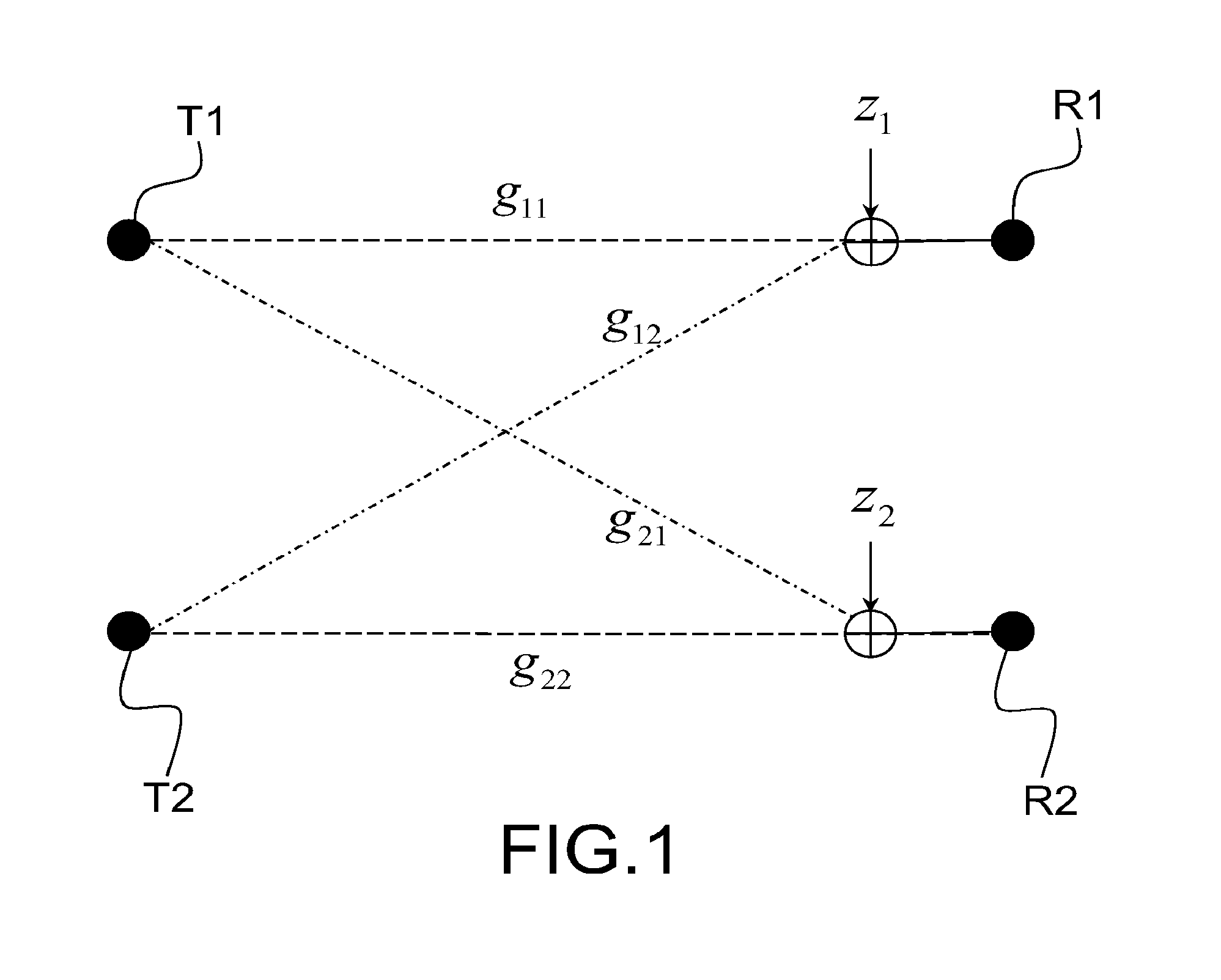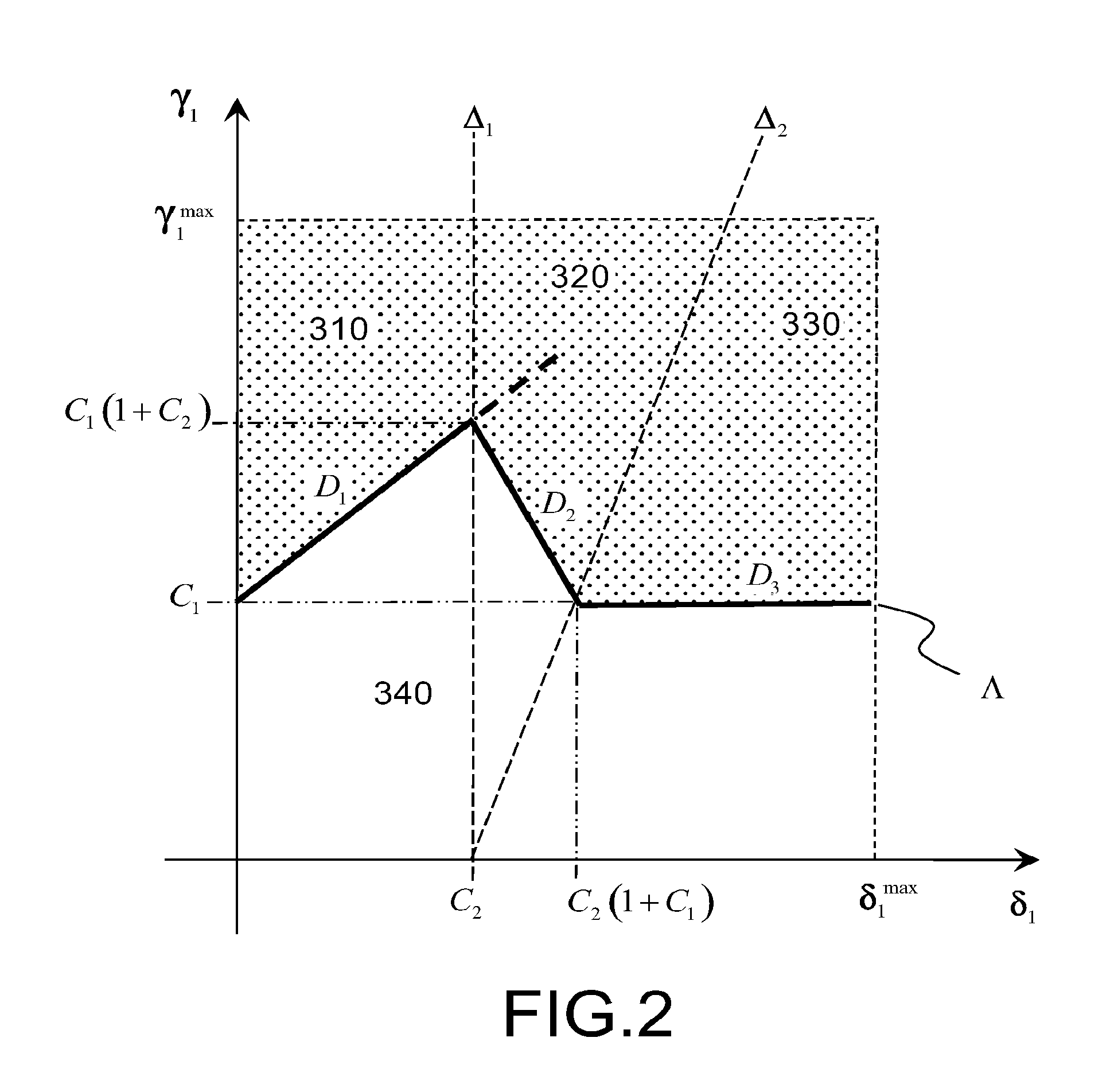Decision-making process for a communication handover in an in-band interferential context
a communication handover and in-band interference technology, applied in the field of cellular telecommunication systems, can solve the problems of insufficient use of transmission resources, ineffective management of transmission resources, interference generated by other communications of adjacent cells, etc., and achieve the effect of not significantly disrupting the interference situation
- Summary
- Abstract
- Description
- Claims
- Application Information
AI Technical Summary
Benefits of technology
Problems solved by technology
Method used
Image
Examples
Embodiment Construction
[0031]Here, we consider a wireless communication system comprising a plurality of pairs of transmitting terminals and receiving terminals and we assume that a communication between the terminals of one pair may interfere with the communication between the terminals of another pair, for example because these two communications use shared transmission resources (in-band interference).
[0032]The wireless communication system can for example be a cellular communication network, an ad hoc communication network, a heterogeneous network comprising a macrocellular level and a femtocellular level.
[0033]In a heterogeneous network, the considered communications can be at two different levels, for example one at the macrocellular level and the other at the femtocellular level.
[0034]Each of the communications can either be uplink or downlink, the transmitting terminal or receiving terminal expression being considered in its broad meaning, and in particular including a base station or an access po...
PUM
 Login to View More
Login to View More Abstract
Description
Claims
Application Information
 Login to View More
Login to View More - R&D
- Intellectual Property
- Life Sciences
- Materials
- Tech Scout
- Unparalleled Data Quality
- Higher Quality Content
- 60% Fewer Hallucinations
Browse by: Latest US Patents, China's latest patents, Technical Efficacy Thesaurus, Application Domain, Technology Topic, Popular Technical Reports.
© 2025 PatSnap. All rights reserved.Legal|Privacy policy|Modern Slavery Act Transparency Statement|Sitemap|About US| Contact US: help@patsnap.com



